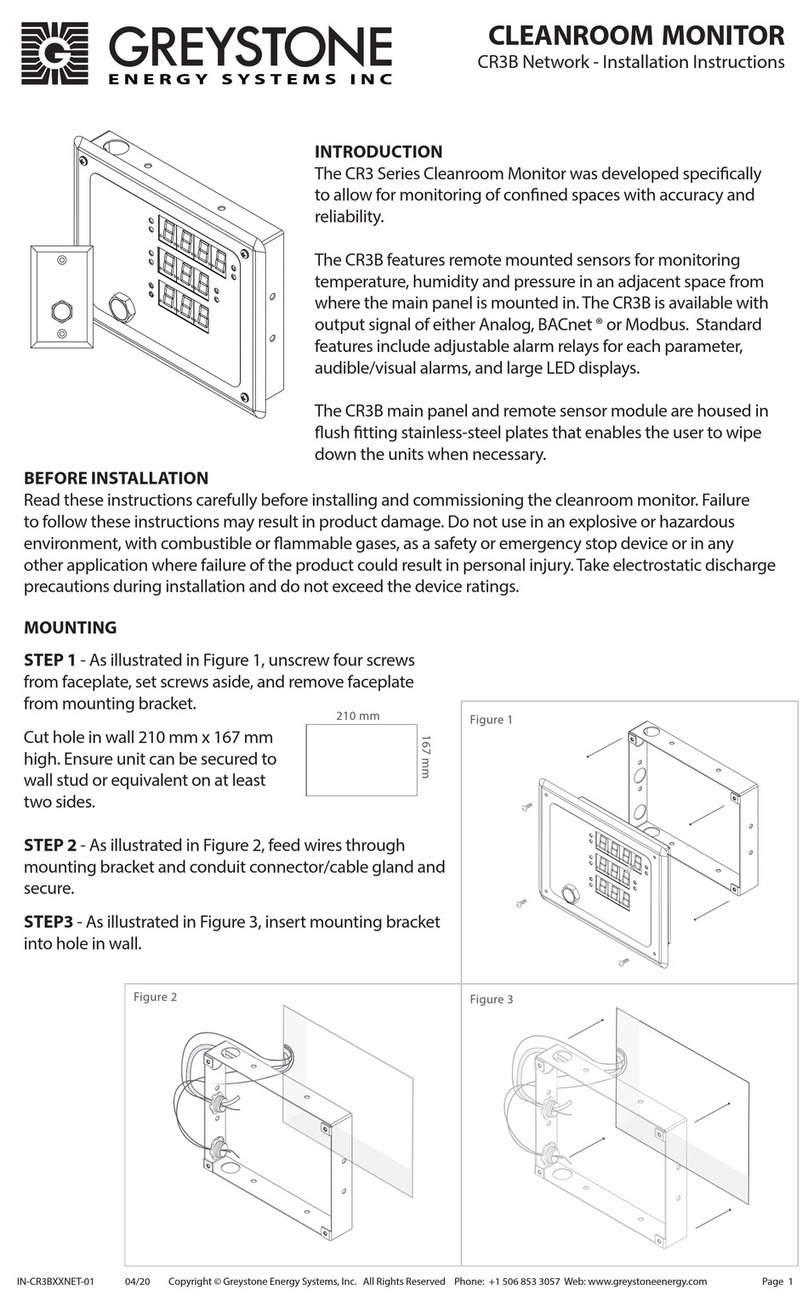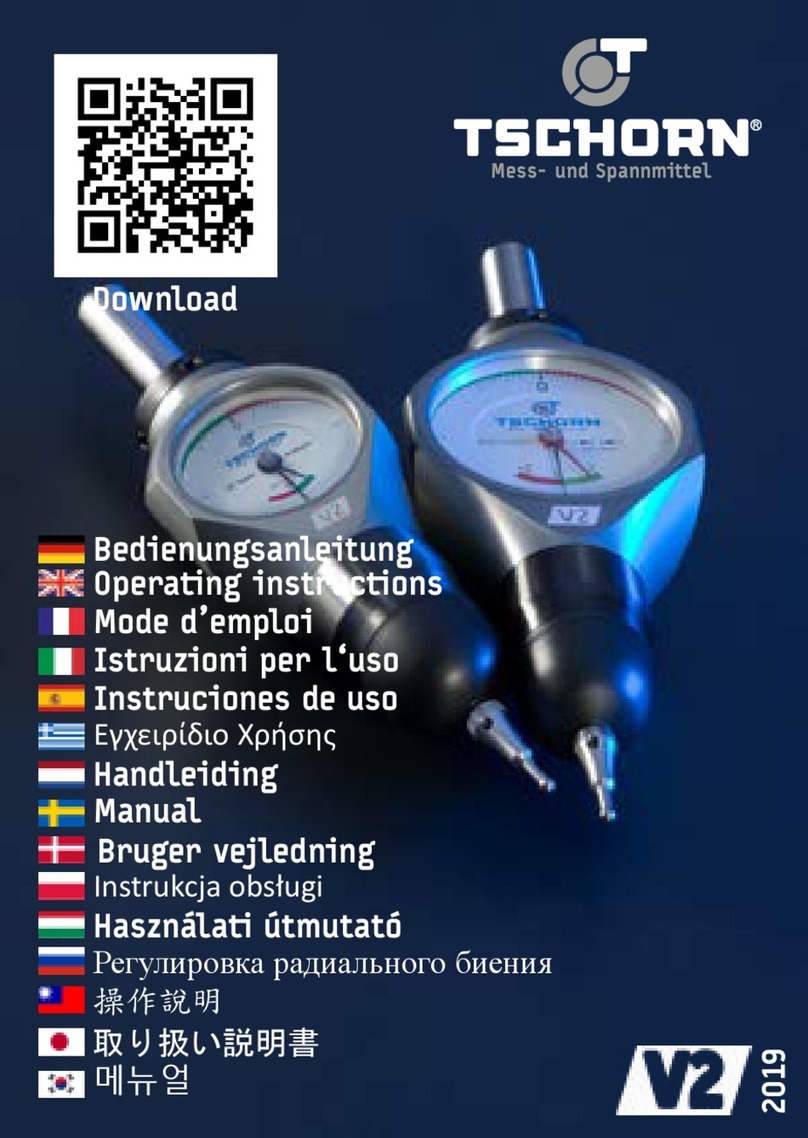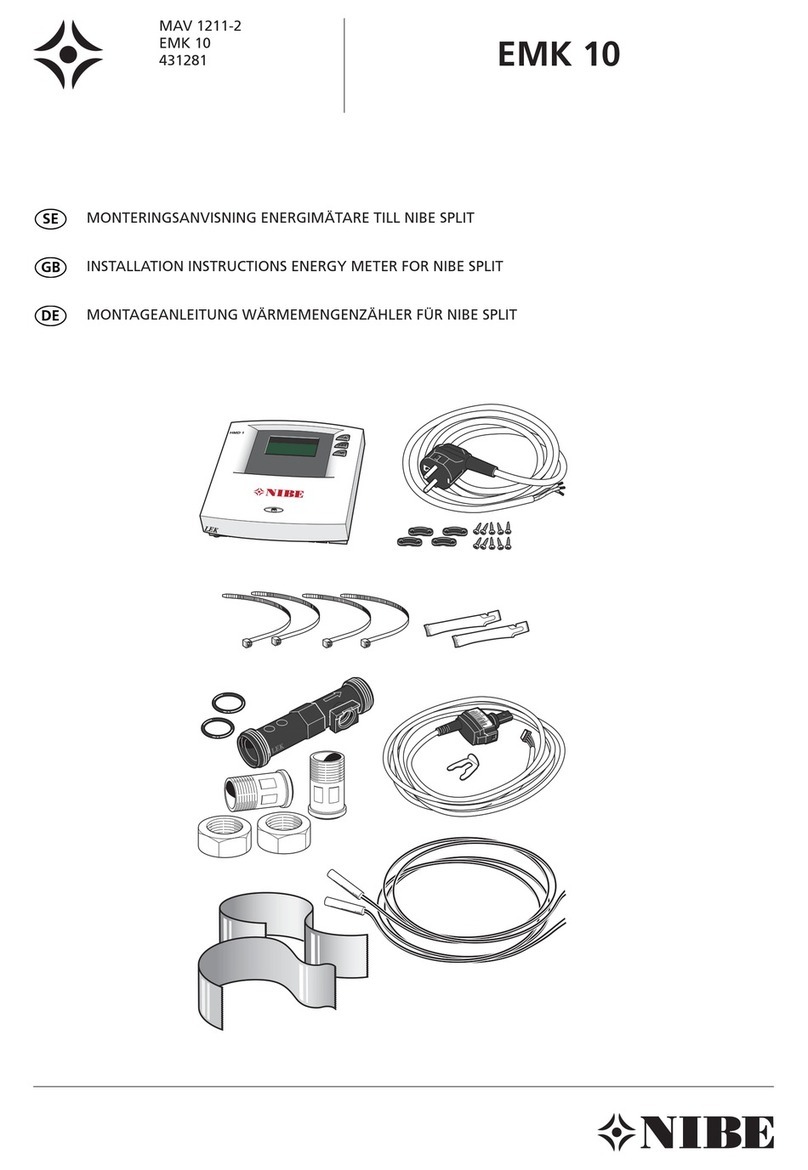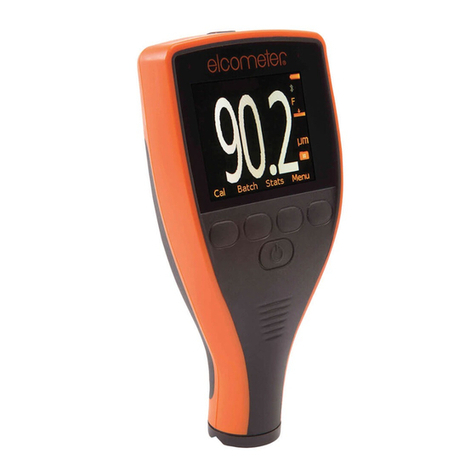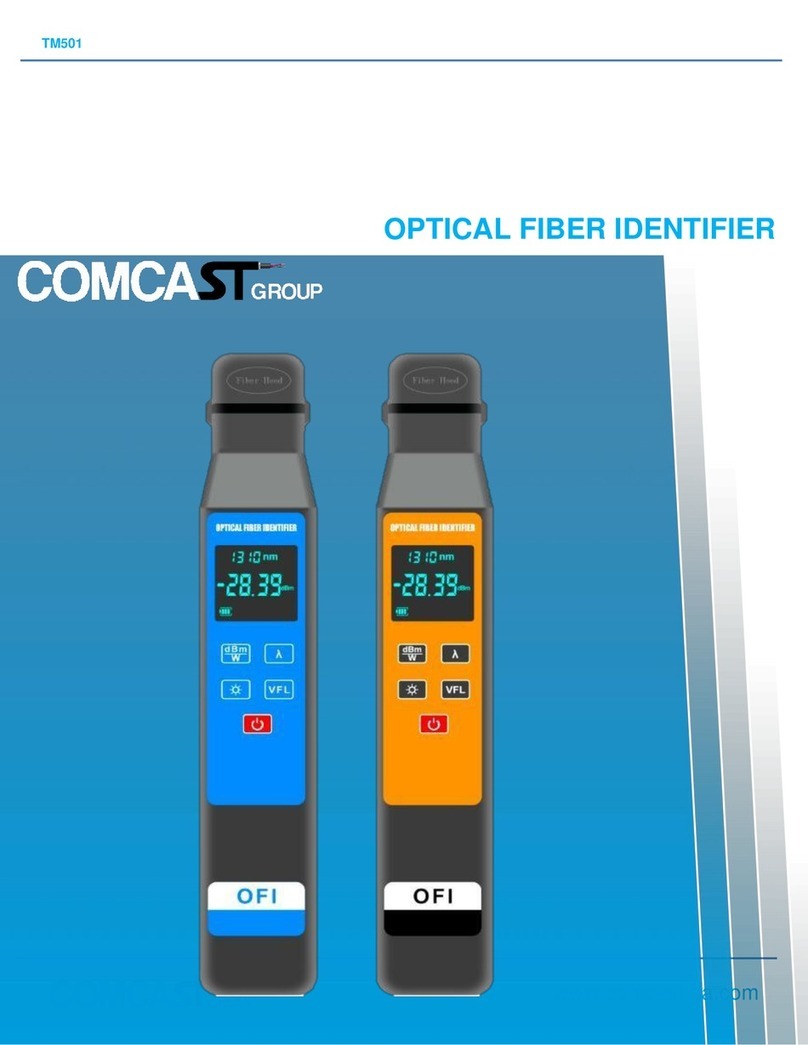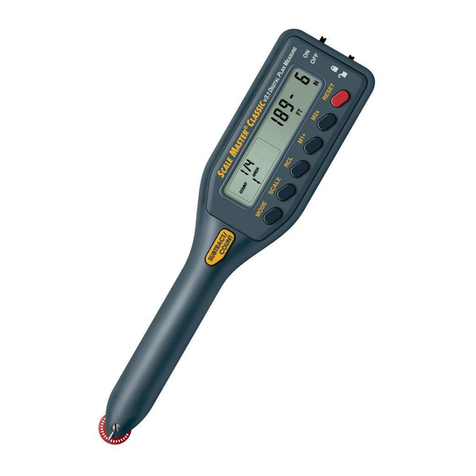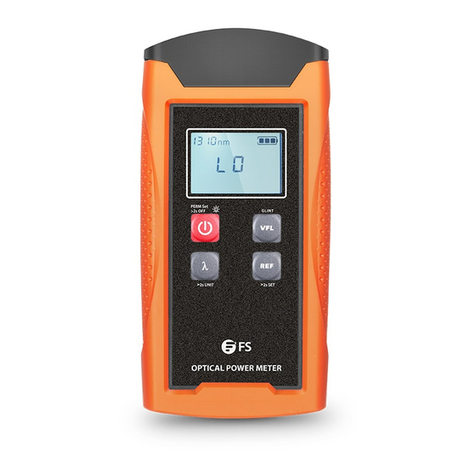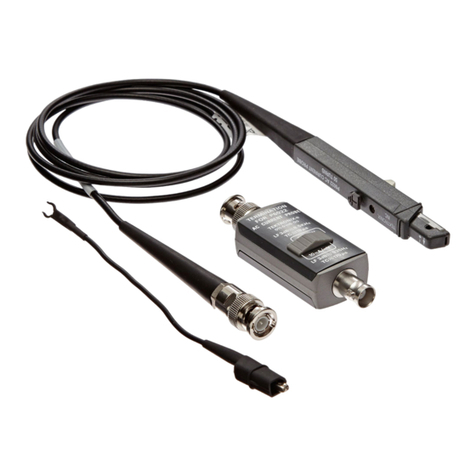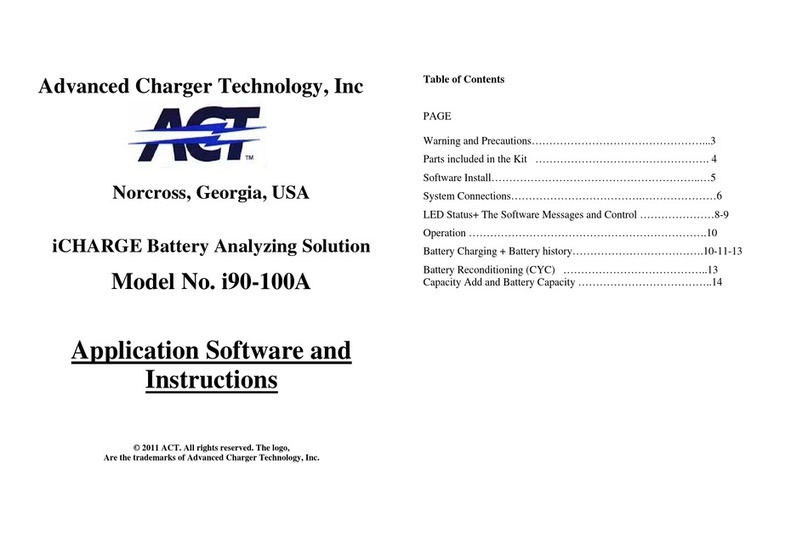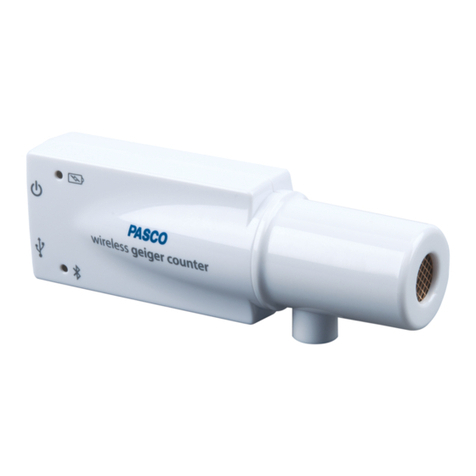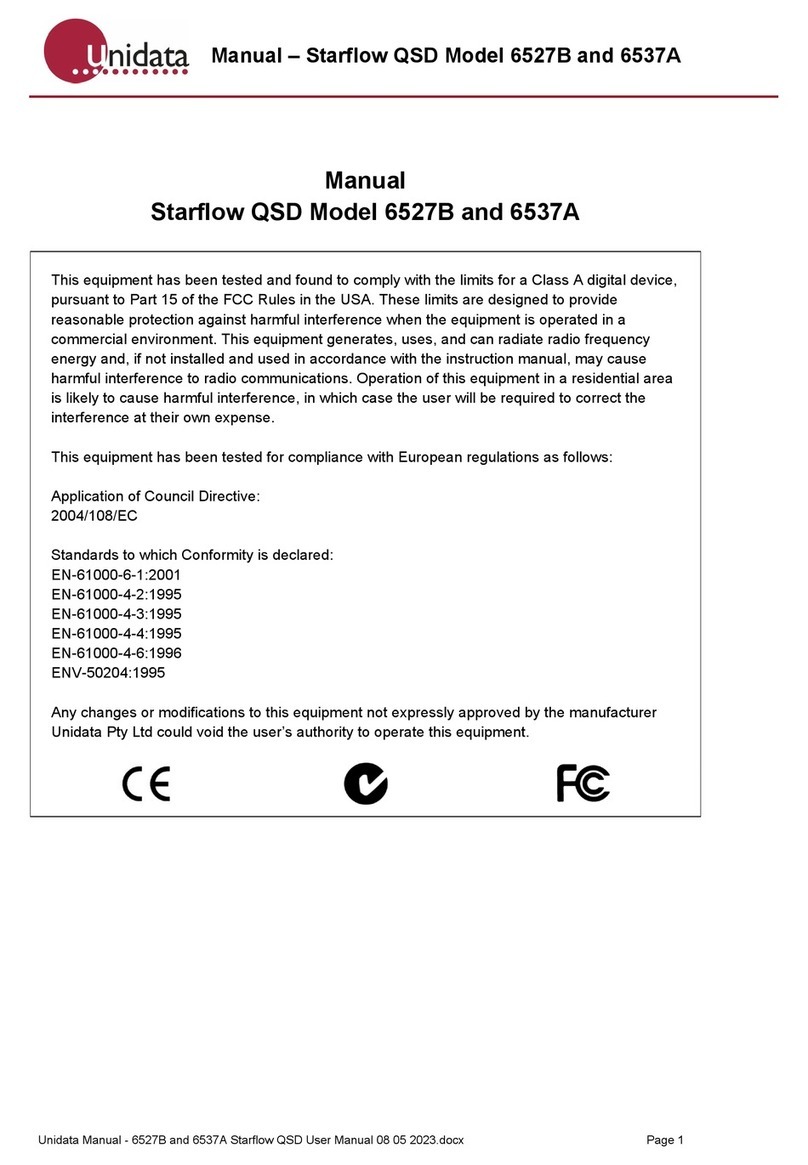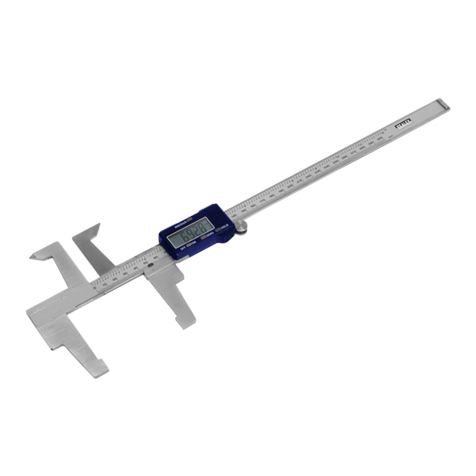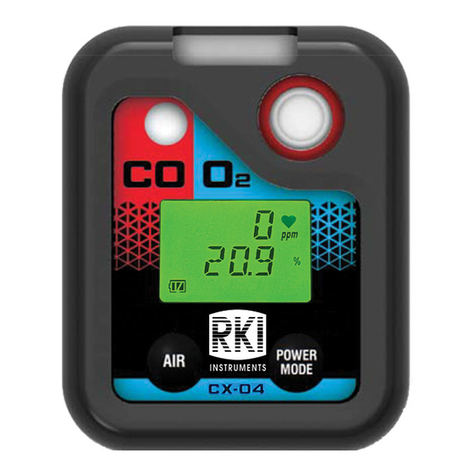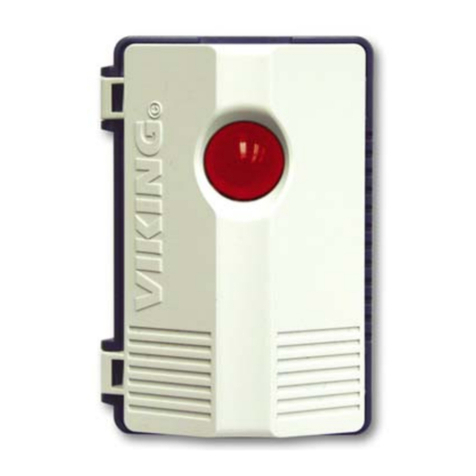Greystone Energy Systems CR3 Series User manual

Page 1
INTRODUCTION
The CR3 Series Cleanroom Monitor was developed specically
to allow for monitoring of conned spaces with accuracy and
reliability.
The CR3C features analog inputs for connecting remote sensors
for monitoring temperature, humidity and pressure (remote
sensors not included). The CR3C is available with output signal
of either Analog, BACnet ® or Modbus. Standard features include
adjustable alarm relays for each parameter, audible/visual alarms,
and large LED displays.
The CR3C is housed in a ush tting stainless-steel front plate that
enables the user to wipe down the unit when necessary.
Figure 1
Figure 2 Figure 3
Figure 1
Figure 2 Figure 3
BEFORE INSTALLATION
Read these instructions carefully before installing and commissioning the cleanroom monitor. Failure
to follow these instructions may result in product damage. Do not use in an explosive or hazardous
environment, with combustible or ammable gases, as a safety or emergency stop device or in any
other application where failure of the product could result in personal injury. Take electrostatic discharge
precautions during installation and do not exceed the device ratings.
MOUNTING
STEP 1 - As illustrated in Figure 1, unscrew four screws
from faceplate, set screws aside, and remove faceplate
from mounting bracket.
Cut hole in wall 210 mm x 167 mm
high. Ensure unit can be secured to
wall stud or equivalent on at least
two sides.
STEP 2 - As illustrated in Figure 2, feed wires through
mounting bracket and conduit connector/cable gland and
secure.
STEP3 - As illustrated in Figure 3, insert mounting bracket
into hole in wall.
210 mm
167 mm
IN-CR3CXXNET-01 04/20 Copyright © Greystone Energy Systems, Inc. All Rights Reserved Phone: +1 506 853 3057 Web: www.greystoneenergy.com
CLEANROOM MONITOR
CR3C Network - Installation Instructions

Page 2
Figure 7
STEP 4 - As illustrated in Figure 4, insert screws (not
included) to secure mounting bracket to studs.
STEP 5 - Remove connectors from packaging box. As
illustrated in Figure 5, connect wires to wiring terminals.
Refer to wiring section for terminal identication.
STEP 6 - Match wiring terminals to the labels on the
back cover and re-insert the wiring terminals into the
unit. As illustrated in gure 6.
STEP 7 - As illustrated in Figure 7, secure faceplate to
mounting bracket with supplied screws. Route wires and
tubing to prevent pinching when installing unit into wall
mounting bracket.
WIRING
• Deactivate the 24 Vac/dc power supply until all connections are made to the device to prevent
electrical shock or equipment damage.
• Follow proper electrostatic discharge (ESD) handling procedures when installing the device or
equipment damage may occur.
• Use 22 AWG wiring for all connections and do not locate the device wires in the same conduit with
wiring used to supply inductive loads such as motors.
• Make all connections in accordance with national and local codes.
Connect the 24 Vac/dc power supply to the terminals labeled PWR +(power) and - (common) as
shown in Figure 9. This device has a half-wave type power supply so use caution when wiring multiple
devices so that the circuit ground point is the same on all devices and the controller. Use caution if
24 Vac power is used and one side of the transformer is earth-grounded. In general, the transformer
should NOT be connected to earth ground when using devices with RS-485 network connections.
The device is reverse voltage protected and will not operate if connected backwards. Figure 11shows
network connections. For end of Line (EOL) device place termination resister jumper in ON position, for
all other devices, place jumper in OFF position.
Figure 4 Figure 6
Figure 5
IN-CR3CXXNET-01 04/20 Copyright © Greystone Energy Systems, Inc. All Rights Reserved Phone: +1 506 853 3057 Web: www.greystoneenergy.com

Page 3
B+
A-
SHLD
PWR
COM
B+
A-
SHLD
PWR
COM
B+
A-
SHLD
PWR
COM
B+
A-
Shield
24 Vdc
Common
B+
A-
SHLD
PWR
COM
B+
A-
SHLD
PWR
COM
B+
A-
SHLD
PWR
COM
B+
A-
Shield
External 24 Vdc
Power Supply or
24 Vac Transformer
Common
Building Controlle
r
Set EOL
Jumper
Building Controller
Device 1 Device 2 Device 3
Device 1 Device 2 Device 3
Connect Shield One End Only
Connect Shield One End Only
Figure 11
Figure 9
Jumper
Location
ON
OFF
ALARM CONTACTS ANALOG OUTPUTS
SENSOR
BOARD
ALARM CONTACTS
RH-|RH+|TE-|TE+|DP -|DP+ RH-|RHV|RHI|TE-|TEV|TEI|DP -|DPV|DPI
VIN DIG IN
Pressure Analog Output (4-20mA)
Pressure Analog Output (0-5Vdc or 0-10Vdc)
Pressure Analog Output (Ground)
Temperature Analog Output (4-20mA)
Temperature Analog Output (0-5Vdc or 0-10Vdc)
Temperature Analog Output (Ground)
Humidity Analog Output (4-20mA)
Humidity Analog Output (0-5Vdc or 0-10Vdc)
Humidity Analog Output (Ground)
Pressure Relay (+)
Pressure Relay (-)
Temperature Relay (+)
Temperature Relay (-)
Humidity Relay (+)
Humidity Relay (-)
Digital Input (+)
Digital Input (-)
+24Vdc (24Vac)
Common (24Vac)
Communication (A-)
Communication (B+)
Communication Ground
Pressure Analog Input (Input)
Pressure Analog Input (Ground)
Temperature Analog Input (Input)
Temperature Analog Input (Ground)
Humidity Analog Input (Input)
Humidity Analog Input (Ground)
Figure 12
DI +
DI -
A -
B +
SHIELD (S)
24 VDC / 24 VAC (+)
COMMON / 24 VAC (+)
20V POWER (S)
ANALOG IN (I)
GROUND (G)
PWR DIG IN COMMS DP/TE/RH IN
Pressure (+)
Pressure (-)
TEMPERATURE (+)
TEMPERATURE (-)
HUMIDITY (+)
HUMIDITY (-)
ALARM CONTACTS
123456
DP 4-20mA (DPI)
DP 0-5/10VDC (DPV)
DP COMMON (DP-)
TE 4-20mA (TEI)
TE 0-5/10VDC (TEV)
TE COMMON (TE-)
ANALOG OUTPUTS
123456789
RH 4-20mA (RHI)
RH 0-5/10VDC (RHV)
RH COMMON (RH-)
1 2 1 2 1 2 3 1 2 3
REAR VIEW
CONNECTORS (Front view, screw on top)
COMMUNICATION WIRING
ANALOG OUTPUTS
Pressure Analog Input (20V Power)
Temperature Analog Input (20V Power)
Humidity Analog Input (20V Power)
IN-CR3CXXNET-01 04/20 Copyright © Greystone Energy Systems, Inc. All Rights Reserved Phone: +1 506 853 3057 Web: www.greystoneenergy.com

Page 4
ALARM RELAYS
The device has three alarm relay outputs. The outputs are Normally Open and will close when an alarm
event occurs. The alarm outputs are assigned to TEMP, RH and DP.
Each alarm can be set to operate as a low alarm, a high alarm, both low and high alarms or be disabled.
For example:
The TEMP Alarm output can be congured as a high alarm by setting TEMP Alarm Operation to High
Alarm. In this case the alarm condition will be set when the temperature exceeds the TEMP Alarm High
Setpoint. Note that alarm hysteresis and alarm on delay will also come into play, described below.
The RH Alarm output can be congured as both low and high alarms by setting RH Alarm Operation to
Both. In this case the alarm condition will be set when the RH goes above the RH Alarm High Setpoint or
below the RH Alarm Low Setpoint.
If any ALARM OPERATION is set to Disable, then that alarm will have no function and the setpoints will
be hidden on the menu.
Each alarm has a hysteresis value and an on delay time associated with it. For high alarms, the alarm
condition is set when the input value exceeds the high setpoint and it is reset when the input value
goes below the setpoint – hysteresis value. For example, if the TEMP ALARM HIGH SETPOINT = 25.0 °C
and TEMP ALARM HYSTERESIS = 0.5 °C, then the alarm condition will set at 25.0 °C and reset at 24.5 °C.
The hysteresis is opposite for TEMP ALARM LOW SETPOINT. The alarm condition will set when the input
value falls below TEMP ALARM LOW SETPOINT and will reset when the input goes above TEMP ALARM
LOW SETPOINT + HYSTERESIS.
Each alarm also has a congurable on delay. When an alarm condition is set a timer is started and the
actual alarm will not get set until the ALARM ON DELAY time has expired. If the alarm condition gets
reset before the time expires, then no alarm is generated.
All three alarm relays operate as self-resetting and non-latching. The input signal must return to non-
alarm condition before the alarm relay returns to the NO state.
ALARM SETPOINTS
Each process variable (TEMP, RH and DP) has both a high and low alarm setpoint. If the alarms are
enabled and the setpoint is not locked, then the user can change the setpoint values within a range.
ALARM LEDS
The TEMP, RH and DP each have a low and high alarm condition. When any alarm condition is set the
corresponding front panel LED will ash. The alarm LEDs mimic the alarm relays. If any alarm is disabled,
then the LED will be disabled also.
BUZZER ALARM
The buzzer alarm can be assigned to any of the TEMP, RH or DP alarms specically, or it can be assigned
to all of them. It can be disabled via BUZZER ASSIGNMENT.
If assigned, the buzzer will activate whenever the associated alarm(s) are triggered.
The buzzer reset can be congured as either manual only or automatic reset with BUZZER RESET.
In manual mode the buzzer can only be silenced by:
• removing the alarm condition or
• by pressing the front panel <SILENCE> key
In automatic reset mode the buzzer can be silenced by:
• removing the alarm condition or
• by pressing the front panel <SILENCE> key or
• automatically when the BUZZER AUTO RESET TIME expires
The buzzer is reset or silenced as described above but the alarm condition will continue to be set, this
function only silences the buzzer. If the alarm condition is reset and then set again, the buzzer will
activate again. The buzzer provides a“beeping”or“chirping”sound, not a continuous tone.
IN-CR3CXXNET-01 04/20 Copyright © Greystone Energy Systems, Inc. All Rights Reserved Phone: +1 506 853 3057 Web: www.greystoneenergy.com

Page 5
DIGITAL INPUT
The digital input signal allows detection of a dry-contact type input change. This input could be connected
to a door switch, remote nurse station silence switch, occupancy sensor etc.
The actual program function of the DI can be set with DIGITAL INPUT FUNCTION. The input may be
disabled to have no internal program function, or it may be used as a remote alarm silence with the same
function as the front panel <SILENCE> key, or it may be used as a door freeze function.
The door freeze function can be used to prevent alarms and fast ramps of the analog output when a door
is opened. In this mode, if a digital input from a door switch is detected, then the operation of the device
freezes. This means that no alarms will be generated and the analog outputs are held at the last value
before the door open occurred. The device will sit in this state until the door closes again. There is a small
delay of 10 seconds to allow the room to stabilize again after the door is closed.
RS-485 NETWORK
The network connection is a standard feature on the product and is necessary to fully congure the device.
The unit will have either BACnet® or Modbus protocol implemented.
ANALOG OUTPUTS
There are three analog output signals to represent TEMP, RH and DP. Select desired output via installer
menu for current (4-20 mA) or voltage output signals. If the analog outputs are set for voltage output, then
the signal type can be set to either 0-5 Vdc or 0-10 Vdc via the Installer Menu. All outputs will set for the
same type.
The direction of the analog output signals may be reversed by using the TEMP OUT DIRECTION (for
example) Installer Menu item. This means that the output signal will be 5-0 V or 20-4 mA instead of 0-5 V or
4-20 mA.
ANALOG INPUTS
The AI objects or registers for TEMP, RH and DP indicate the current value of the temperature, relative
humidity and dierential pressure measurements. Depending on the model type, these values either come
from the on-board or remote sensors, or from remote transmitters connected to the analog inputs.
The actual hardware analog inputs will accept either 0-5 Vdc, 0-10 Vdc or 4-20 mA input signal types from
remote transmitters. The input type is eld selectable via the Installer Menu or over the network and the
input signals are calibrated digitally for < 0.25 % span error during factory calibration.
Both TEMP and RH have network variables to set an oset for eld calibration. These apply to both the
on-board sensors and remote transmitter values. The DP sensor has an auto-zero function initiated by DP
AUTO ZERO or via the Installer Menu. There is no oset to apply to a remote DP transmitter, calibration
must occur at the remote DP transmitter itself.
To accommodate dierent transmitter types, the input scale may be set with network variables. For
example, the AI temperature range may be selected as either 0-35 or 0-50 °C. The pressure range may be
set to ± 250 or ± 500 Pa.
The TEMP, RH and DP values each have response time variable associated with them. They can be set
for fast or slow response. For fast response there is a minimum amount of digital ltering applied to the
measurements so that the sensors react quickly to changes. The response can be changed to slow which
applies a longer period of ltering to the measurement and will slow down the sensor reaction to large
changes. The dierence between fast and slow should be about 5 times.
MIN MAX VALUES
The program maintains the minimum and maximum value of each sensor value. The values may be
displayed via the User Menu and may also be reset via the User Menu.
MISCELLANEOUS
The displays (and associated alarm LEDs) for each process variable may be turned o if necessary using the
Installer Menu items such as TEMP DISPLAY.
Display brightness may be changed from high to low using DISPLAY BRIGHTNESS via the User Menu.
IN-CR3CXXNET-01 04/20 Copyright © Greystone Energy Systems, Inc. All Rights Reserved Phone: +1 506 853 3057 Web: www.greystoneenergy.com

Page 6
FRONT PANEL KEYS
There are 4 front panel buttons:
<UP> Used to increase parameter values within a menu.
<DOWN> Used to decrease parameter values within a menu.
<MENU> In normal operation, pressing this button accesses the User Menu and then is used to
step through the menu items. The button is disabled if USER MENU LOCK is set.
<SILENCE> Used to silence the buzzer if it is active.
INSTALLER MENU
The Installer Menu is accessed by pressing and pushing both the <UP> and <DOWN> buttons together in
normal operation at the same time for 5 seconds. This menu is used in the eld to congure parameters
such as the communication protocol, device address, analog output type, etc. The Installer Menu may
be locked so it cannot be accessed in the eld, or unlocked via BACnet®, Modbus or the Factory menu if
necessary using INSTALLER MENU LOCK.
If the Installer Menu is unlocked, then the following parameters are available to be changed. Some items
will not be available depending on other settings.
NOTE : To change a previous setting, return to the initial install menu.
1. Baud Rate
9 600, 19 200, 38 400,
57 600, 76 800, 115 200
2. Address 0-127 for BACnet® Addr
1-255 for Modbus 0 to 255
Start up
When power is rst applied to the device, a specic
sequence of events occurs to test the displays plus
indicate certain parameters.
The sequence is as follows:
• Test all LEDs – all LEDs light for 2 seconds and
then turn o
• Test all display segments – all display segments
light for 2 seconds and then turn o
• Display version # - display“1.00”on one of the
displays for 2 seconds
• Display selected protocol – display“Prot bAC”
or“Prot bUS”
• Display address - display“Addr 003”
• Display baud rate - display“bAUd 9600”
• Buzzer beeps 2 times
• Begin normal operation
OPERATION
a d d r
b a c
0 0 3
b a u d
9
6 0 0
IN-CR3CXXNET-01 04/20 Copyright © Greystone Energy Systems, Inc. All Rights Reserved Phone: +1 506 853 3057 Web: www.greystoneenergy.com

Page 7
3. Parity
(No Parity, Odd or Even) non, odd, E (Default = non)
4. Stop Bits
1 or 2 (Default = 1)
5. CRC A001, 1021, 8005, 8408 (Default = A001)
6. Delay
0, 50, 150, 200, 250, 300, 350 (Default = 0)
7. Analog Output Type curr, volt (Default = curr)
(Current or Voltage)
8. Volt Output Scale
(Only if voltage selected)
5 or 10 (Default = 5)
9. AO TEMP Override
0 to 100 (Default = 0)
10. AO RH Override
0 to 100 (Default = 0)
11. AO DP Override
0 to 100 (Default = 0)
INSTALLER MENU (Continued)
Only if Modbus selected
Only if AO OVERRIDE set via comms
a o 1
t e
0
a o 2
r h
0
a o 3
d p
0
c u r r
o u t
V o l t
o u t
5
P a r
n o n
s t o p
1
a 0 0 1
c r C
d e l y
0
IN-CR3CXXNET-01 04/20 Copyright © Greystone Energy Systems, Inc. All Rights Reserved Phone: +1 506 853 3057 Web: www.greystoneenergy.com

Page 8
12. User Menu
(Lock / Unlock)
unLoc, Loc (Default = unLoc)
USER MENU
The User Menu is accessed by pressing the <MENU> key. This menu is used in the eld to congure
parameters such as alarm setpoints. The User Menu may be locked so it cannot be accessed in the eld,
but can be unlocked via BACnet®, Modbus or the Installer menu if necessary using USER MENU LOCK.
If the User Menu is unlocked, then the following parameters are available to be changed.
If SETPOINT LOCK is set, then the setpoints can be viewed but not changed.
1. Temperature Units
C F (Default = C)
2. Pressure Units
(Pascal or mmWc)
PA, StA (Default = PA)
3. Display Brightness
hi, Lo (Default = hi)
4. TEMP Alarm Low Setpoint (Resolution is 1° via the menu)
(0-26°C or 32 to 79°F)
5. TEMP Alarm High Setpoint (Resolution is 1° via the menu)
(4-30°C or 39 to 86°F)
6. RH Alarm Low Setpoint (Resolution is 1 %RH via the menu
5 to 60% RH
7. RH Alarm High Setpoint (Resolution is 1 %RH via the menu)
40 to 90% RH
INSTALLER MENU (Continued)
U s E R
u n
l o c
u n i t
t e
c
u n i t
d p
p a
d s p y
b r t
h i
t e s p
l o
1 0
t e s p
h i
2 2
r h s p
l o
3 0
r h s p
h i
6 5
IN-CR3CXXNET-01 04/20 Copyright © Greystone Energy Systems, Inc. All Rights Reserved Phone: +1 506 853 3057 Web: www.greystoneenergy.com

Page 9
8. DP Alarm Low Setpoint (Resolutionis 10 Pa or 1 mmWc via men)
-250 to 0 Pa (-25 to 0 mmWc) Pressure Range 1
-500 to 0 Pa (-50 to 0 mmWc) Pressure Range 2
9. DP Alarm High Setpoint (Resolution is 10 Pa or 1 mmWc via menu)
-150 to 200 Pa (-15 to 20 mmWc) Pressure Range 1
-400 to 400 Pa (-40 to 40 mmWc) Pressure Range 2
10. TEMP Minimum Value (Resolution is 0.1°C)
(displays minimum recorded temperature)
11. TEMP Maximum Value (Resolution is 0.1°C)
(displays maximum recorded temperature)
12. RH Minimum Value (Resolution is 1%RH)
(displays minimum recorded RH)
13. RH Maximum Value (Resolution is 1%RH)
(displays maximum recorded RH)
14. DP Minimum Value (Resolution is 1 Pa or 1 mmWc)
(displays minimum recorded dierential pressure)
15. DP Maximum Value (Resolution is 1 Pa or 1 mmWc)
(displays maximum recorded dierential pressure)
16. Min Max Reset (Pressing <SILENCE> resets the min max values)
(Pressing <Menu> to exit user menu)
Note that only the setpoints that are congured will be shown. For example, if TEMP
ALARM OPERATION is set for High Alarm only, then the TEMP Alarm Low Setpoint will not
be shown.
Note that the setpoint resolution is limited when setting with the menu, but higher
resolution is available via the network.
d p s p
l o
0
d p s p
h i
2 0
t e l 0
2 4 9
t e h i
2 5 2
r h l 0
1 2 7
r h h i
1 3 1
d p l o
0
d p h i
0
h i
l o
r s t
When Pa units selected, setpoint value
displayed has been divided by 10.
When Pa units selected, setpoint value
displayed has been divided by 10.
IN-CR3CXXNET-01 04/20 Copyright © Greystone Energy Systems, Inc. All Rights Reserved Phone: +1 506 853 3057 Web: www.greystoneenergy.com

Page 10
GENERAL
Operating Conditions 0 - 50 °C (32 - 122 °F),
0 - 90 %RH non-condensing
Storage Temperature -20 - 60 °C (-4 - 140 °F)
Power Supply 24-30 Vdc / 20-26 Vac
Power Consumption 200 mA max
Wiring Connections Pluggable screw terminal block
(14 to 22 AWG)
Pressure Connections Port for 1/8”ID tubing
Enclosure - Wall Mount: SS304, suitable for wipe-down.
225mm wide x 182.5mm high x 36mm deep.
(8.86”x 7.19”x 1.46”)
Enclosure - Remote Sensor Plate:
70mm wide x 115mm high45mm deep
(2.76”x 4.53”x 1.77”)
Weight 1.3 kg
Certication CE, RoHS
ANALOG INPUTS FOR REMOTE SENSORS
Signal Type 4-20 mA / 0-5 Vdc / 0-10 Vdc selectable
Number of Inputs 3 (Temp, RH, DP)
Input Impedance 250 Ω for 4-20 mA, 10KΩ for voltage
InputRanges 0-35/0-50°C,0-100%RH,±250Pa/±500Pa
Transmitter Power Output 20Vdc nominal, 100 mA max
INDICATION
TemperatureDisplay 3digitLEDas0.0-50.0°Cor32.0-122°F
(°C / °F is indicated by an LED)
Relative Humidity Display 3 digit LED as 0.0-99.9 %RH
Dierential Pressure Display
3 1/2 digit LED display as -500-500 Pa
or -50.0-50.0 mmWc (Pa / mmWc is indicated by an LED)
Digit Type 7 segment red LED, 0.80”(20.32 mm) high
Alarm Indication Low/High alarm red LED for each
USER INPUT
Programming Menu/Up/Downfrontpaneltactilekeys
Alarm Silence Silence front panel tactile key
ANALOG OUTPUTS
Signal Type 4-20 mA (sourcing)
and 0-5 Vdc / 0-10 Vdc selectable
Number of Outputs 3 (Temp, RH, DP)
Output Drive 500 Ω max for 4-20 mA,
10 KΩ min for voltage
Output Scales 0-50 °C, 0-100 %RH, ± 500 Pa
ALARM OUTPUTS
Number of Outputs 3 (Temp, RH, DP) can assign
condition as low/high/both
OutputType NO optically isolated solid state FET switch
Contact Rating 100 mA at 28 Vac / 40 Vdc maximum
Trip Point Upper and Lower alarms
adjustable over a range
Alarm Delay 0 to 255 seconds (programmable)
Operation Self-resetting, non-latching
Alarm Buzzer Internal, operates on any alarm condition
Buzzer Delay 0-255 seconds (programmable)
Buzzer DB 70db at 30cm
Operation Self-resetting, can be silenced
via key or disabled remotely
COMMUNICATION
Hardware Isolated 2-wire RS-485 MS/TP
Software Modbus RTU or BACnet®
Baud Rate 9600, 19200, 38400, 57600, 76800 or 115200
Address Range 1-255 for Modbus, 0-127 for BACnet®
DIMENSIONS
225 mm
8.86“
182.5 mm
7.19“
36mm
1.46“
SPECIFICATIONS
IN-CR3CXXNET-01 04/20 Copyright © Greystone Energy Systems, Inc. All Rights Reserved Phone: +1 506 853 3057 Web: www.greystoneenergy.com

Page 11
NETWORK SETUP GUIDE
The network set up guide describes the implementation of the BACnet® or Modbus protocol. It is
intended to assist control system programmers who may need to add support to their systems to
communicate with this device.
BACnet® and Modbus setup guide downloads are available online.
BACNET® PROTOCOL
http://downloads.greystoneenergy.com/SG/SG-CR3-Bacnet-01.pdf
MODBUS PROTOCOL
http://downloads.greystoneenergy.com/SG/SG-CR3-Modbus-01.pdf
IN-CR3CXXNET-01 04/20 Copyright © Greystone Energy Systems, Inc. All Rights Reserved Phone: +1 506 853 3057 Web: www.greystoneenergy.com

Page 12
IN-CR3CXXNET-01 04/20 Copyright © Greystone Energy Systems, Inc. All Rights Reserved Phone: +1 506 853 3057 Web: www.greystoneenergy.com
Other manuals for CR3 Series
4
This manual suits for next models
1
Table of contents
Other Greystone Energy Systems Measuring Instrument manuals
